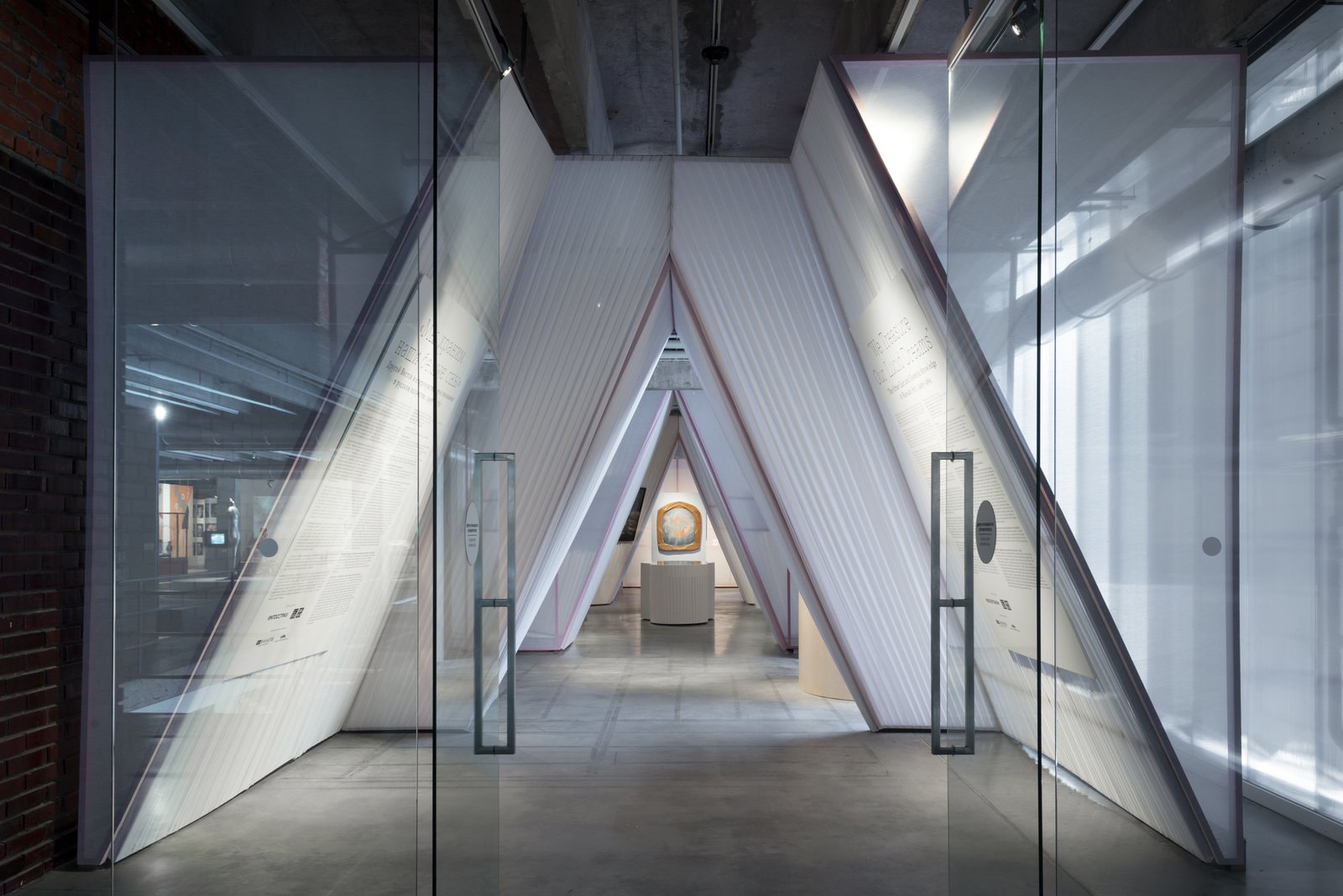"We Treasure Our Lucid Dreams." The Other East and Esoteric Knowledge in Russian Art 1905–1969 Mobile Guide
“We Treasure Our Lucid Dreams.” The Other East and Esoteric Knowledge in Russian Art, 1905–1969 is the result of a major research project undertaken by the team at Garage together with Samarkand-based art critic Alexey Ulko and Moscow-based artist Alexandra Sukhareva. The quote in the title is from a poem by the writer Andrei Bely (1880–1934), who was a central figure in the Russian esoteric movement.
The exhibition tells the story of those people living in the Russian Empire and the Soviet Union in the first half of the twentieth century, whose creative and spiritual enquiries were closely connected to a “pretersensual” understanding of the world, secret societies, and mystical practices, all of which often coincided with an exodus to the Soviet East. Here there are many characters, not a single protagonist. However, if we were to create a map of their connections, it would be clear that all of the people concerned directly or indirectly knew of each other’s work or influenced each other “by reflection.”
The chronological research begins at the turn of the twentieth century, in the Russian Empire, at a time when mystical circles and spiritual societies were thriving: from the anthroposophists and spiritualists to the knightly orders. After the revolution, the activities of esoteric communities began to be wound up. There were a number of prosecutions for “anti-Soviet agitation,” which affected a significant proportion of the intellectual elite and led to the loss of evidence of a wide range of personal cultural and spiritual practices. At that point, the Soviet East (in particular Samarkand) became a way out for many of the people featured in the exhibition, even if sometimes purely an imaginary one. It was a territory that was briefly free from ideological pressure. The exhibition narrative develops around the symbolic cycle of flourishing and exile: from the diversity of esoteric practices in the pre-revolutionary period to the exile and executions of the 1930s and 1940s; from the spiritual rebirth in the Soviet East of the 1920s to the arrests and persecution that followed.
The art exhibited in “We Treasure Our Lucid Dreams” exists at the periphery. It lies outside the achievements of modernism and, in particular, the radical Soviet avant-garde. Its conscious secretiveness and invisibility, even for specialists, are a result of the fact that it not an aesthetic experiment but an artifact bearing witness to a spiritual awakening. The logic of documents played a defining role in this exhibition. In the course of two years of work in public and private archives, it was possible to re-establish a number of previously lost artistic biographies using criminal cases and search protocols, including the biography of Rimma Nikolaeva, an artist who was a member of the Russian Anthroposophical Society.
The works by the Moscow artist Alexandra Sukhareva do not interfere with the narrative of the exhibition, nor do they enter into a dialogue with other objects on display. Sukhareva’s three works, created at different times and in varying circumstances, have been combined into the trilogy Christa, Argiris, Eudora. This triad of names has no known topographic or mythological connections. It references landscapes of the imagination that humans perceive as direct experience. These works foreground the esoteric experience, allowing it to exist within the Museum and guaranteeing the viewer an individual acquaintance with the “secret” history of Russian twentieth-century art.
The exhibition brings together paintings, sculptures, drawings, objects, photographs, films, rare books, archive documents, music, and even performances related to various historical periods, artistic traditions, cultural contexts, and geographies. Many works are exhibited for the first time.
The texts in this booklet provide more information about the life and work of the people featured in the exhibition and are a key to the “life cycle” of the show, which flickers between the abundance of spiritual experiments and the direct threat posed by the Soviet system, which consistently destroyed those who thought differently. A forgotten and/or deliberately concealed history of Russian artistic life is revealed to the viewer, the basis of which is secret knowledge of the world and experience of “pretersensual cognition.”
Katya Inozemtseva, Andrey Misiano
